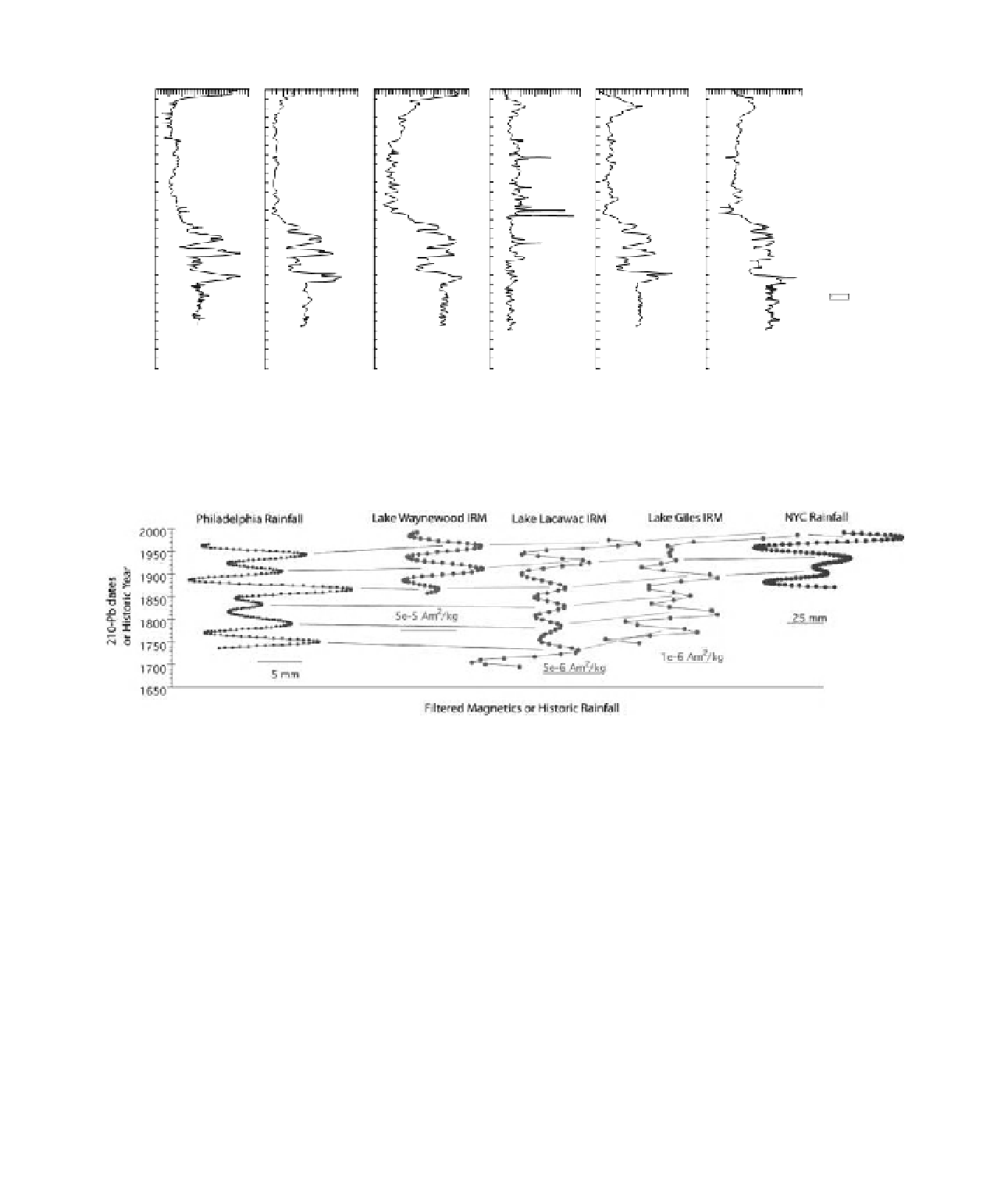Geology Reference
In-Depth Information
Zonation &
14
C
Dates
SIRM
(Am
2
/kg)
ARM
(Am
2
/kg)
S-ratio
SIRM/X
kAm
-1
ARM/X
Am
-1
ARM/SIRM
0.0005
0.0004
0.0
0.0005
0.0
0.8
1
4
0
2500
0.0
0.15
0.0
Zone I
Zone II
1.0
Zone III
2.0
1860
±
80
2110
±
70
3.0
2400
±
70
Zone IV
4.0
3260
±
90
Zone V
5.0
6.0
Fig. 8.3
Dramatic change in magnetic mineral parameters at a depth of
c.
4.4 m (2900 years BP) in Lake Waynewood
sediments. The large-amplitude variations in magnetic parameter then ends abruptly at a depth of
c.
3 m (Cioppa & Kodama
2003a). MT Cioppa and KP Kodama, Environmental magnetic and magnetic fabric studies in Lake Waynewood, northeastern
Pennsylvania, USA: Evidence for changes in watershed dynamics,
Journal of Paleolimnology
, 29, 61-78, 2003, Springer.
Fig. 8.4
Data from Kodama
et al
. (1997b) showing correlation between historic rainfall and IRM intensity of lake sediments
from three Pocono Lakes (Waynewood, Lacawac and Giles). Data were fi ltered to remove high-frequency variations. KP
Kodama, JC Lyons, PA Siver and A-M Lott, A mineral magnetic and scaled-chrysophyte paleolimnological study of two
northeastern Pennsylvania lakes: records of fl y ash deposition, land-use change, and paleorainfall variation,
Journal of
Paleolimnology
, 17, 173-189, 1997, Springer. (See Colour Plate 15)
how environmental magnetic parameters can aid pale-
oclimatic studies of lake sediments.
(1985) found χ
ARM
/SIRM ratios between 0.22 and
0.00102 m/A for the magnetite from eolian dust col-
lected shipboard in the northern Atlantic Ocean and
on the island of Barbados during the summer and
winter seasons. Hounslow & Maher (1999) found very
similar χ
ARM
/SIRM ratios (0.25 - 0.00124 m/A) for the
youngest marine sediments in cores from the Indian
Ocean. χ
ARM
is the ARM divided by the DC magnetic
fi eld used for application of the ARM. Hounslow and
Eolian and fl uvial magnetic mineral
sources
In some studies magnetic mineral parameters are
used to detect eolian magnetic minerals. Oldfi eld
et al
.

























Search WWH ::

Custom Search